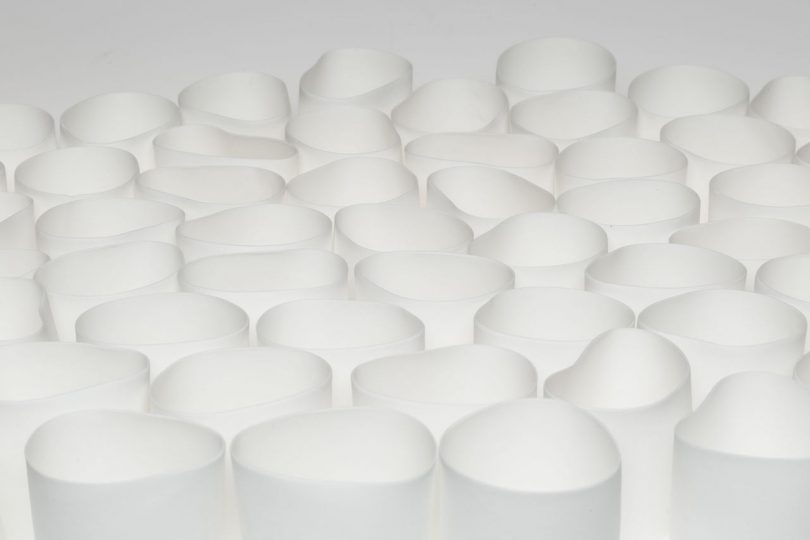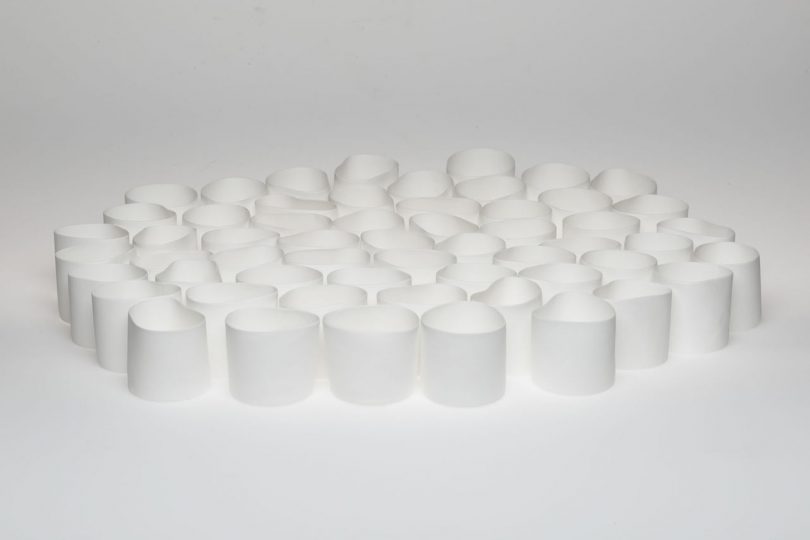As someone who designs products centered around food, I am naturally drawn to materials that are found in kitchens: marble, wood, cork, stainless steel… but when I learned about Gregg Moore’s technique for turning cow parts normally considered waste – BONES – into porcelain… my brain went straight to the compost bin – what other possibilities are we passing up?!
Pennsylvanian designer Gregg Moore dared to imagine how a farm-to table dining experience could extend to the actual vessels.
On a cold call to Dan Barber, the chef and founder of the renowned Blue Hill at Stone Barns, Moore had the audacity to ask, “If you’re thinking about food and the way it’s grown and raised and everything that goes into the creation of a plate, why are you not thinking about the plate itself?”
Together the two came up with a second life for the typically discarded cow bones using Moore’s “recipe” for producing bone china that can be traced back to the one formulated circa 1799 by Josiah Spode, the godfather of British porcelain.
After Barber’s pasture-raised cows are slaughtered and butchered, the bones are boiled, then shipped to Moore in Pennsylvania. He then fires the bones in a kiln, converting them into calcium phosphate. The resultant ash is then mixed with water, kaolin (a type of clay used in the manufacture of porcelain), and Cornish stone. Moore then molds the mixture into impossibly thin shapes – dishes, bowls, and cups – and fires them anew.
These impossibly thin shapes are only possible because Barber’s cows are grass-fed and free range as opposed to those confined in factory-farms. As they wander around the pasture grazing on grass their bones develop greater density and strength – and these attributes remain even when the bones are converted to ash.
The thinness of the material, combined with the manufacturing process, yields an unexpected but welcome quality: Cups made of the stuff tend to wilt under the intense heat of the kiln, gently warping their rims in gentle, organic shapes. “What differentiates bone china from all other ceramic materials is that it’s made out of an element that was once living,” Moore says. “So it has the ability to express, if we look carefully enough, the quality of life of that living entity.”
from WordPress https://connorrenwickblog.wordpress.com/2020/06/29/farm-to-tableware-grass-fed-bone-china-by-gregg-moore/









No comments:
Post a Comment